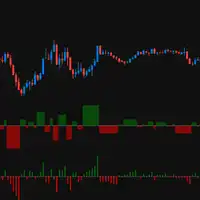
Importance of Risk Management in Binary Options Trading
Risk management is crucial in binary options trading to protect capital and mitigate potential losses. It involves implementing strategies and techniques to effectively manage the risks associated with trading. By employing sound risk management practices, traders can preserve their trading capital, maintain consistency in their trading approach, and increase the overall profitability of their trading endeavors.
Determining Risk Tolerance and Setting Trading Goals
Determining risk tolerance is essential before engaging in binary options trading. Traders must assess their financial situation, investment objectives, and psychological readiness to handle potential losses. Setting realistic trading goals helps in defining the desired level of profitability, timeframes, and acceptable risk levels. By understanding personal risk tolerance and setting clear trading goals, traders can align their strategies and make appropriate risk management decisions.
Position Sizing and Money Management Techniques
Position sizing refers to determining the appropriate amount of capital to allocate to each trade. Money management techniques involve setting specific rules for how much capital to risk on individual trades and across the trading portfolio. By carefully selecting position sizes based on risk tolerance and employing money management techniques like the fixed-percentage risk model or the Kelly criterion, traders can control the potential losses and protect their trading capital.
Setting Stop-Loss and Take-Profit Levels
Setting stop-loss and take-profit levels is a key risk management practice. A stop-loss order is a predefined price level at which a trade will be automatically closed to limit potential losses. A take-profit order is a predetermined price level at which a trade will be closed to secure profits. By setting appropriate stop-loss and take-profit levels based on analysis and risk-reward ratios, traders can effectively manage their trades and ensure controlled risk exposure.
To achieve effective risk management in binary options trading, here are steps you can follow:
- Determine Risk Tolerance and Set Trading Goals:
- Assess your financial situation, investment objectives, and psychological readiness for trading.
- Define your risk tolerance level by considering the amount of capital you are willing to risk.
- Set clear trading goals, including desired profitability, timeframes, and acceptable risk levels.
- Employ Position Sizing and Money Management Techniques:
- Determine the appropriate amount of capital to allocate to each trade (position sizing).
- Implement money management techniques, such as the fixed-percentage risk model or the Kelly criterion.
- Define rules for how much capital to risk on individual trades and across your trading portfolio.
- Set Stop-Loss and Take-Profit Levels:
- Use technical analysis and risk-reward ratios to set stop-loss and take-profit levels for each trade.
- Place stop-loss orders at predetermined price levels to limit potential losses.
- Set take-profit orders at specific price levels to secure profits.
- Manage Emotions and Psychological Aspects:
- Develop discipline and emotional control to avoid making impulsive trading decisions.
- Stick to your trading plan and avoid deviating from your risk management strategies.
- Recognize and manage emotions such as fear, greed, and impatience by practicing self-awareness and maintaining a rational mindset.
- Continuously Monitor and Adjust Risk Management Strategies:
- Regularly review your risk management strategies to ensure they align with your trading goals and risk tolerance.
- Monitor your trades and adjust stop-loss and take-profit levels as necessary based on market conditions.
- Stay updated on market news and events that may impact your trades and risk exposure.
Managing Emotions and Psychological Aspects of Trading
Managing emotions and psychological aspects of trading is crucial in risk management. Emotional decision-making, such as fear, greed, or impatience, can lead to irrational trading choices and poor risk management. Traders must develop discipline, patience, and emotional control to stick to their trading plans, follow risk management rules, and avoid impulsive actions. By managing emotions effectively, traders can make objective decisions based on analysis and adhere to their risk management strategies.




